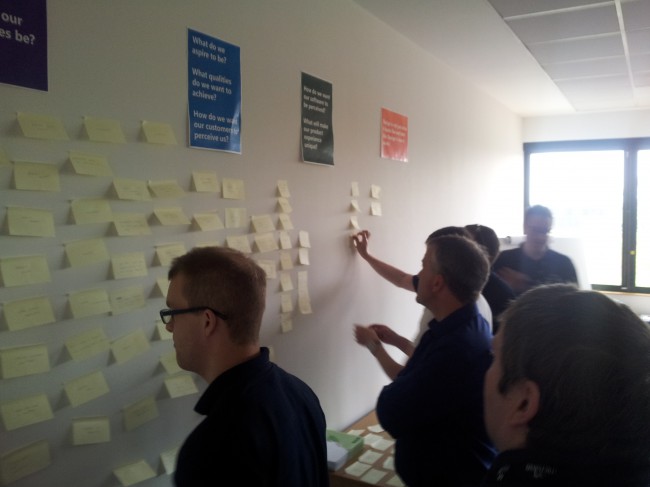Uncovering what we believe in as a business
July 18, 2014 |
Culture
Design principles describe to the world who we are. They allow employees to consistently and meaningfully represent themselves by acting as a theme that runs through everything the business does, creating an experience that transcends departmental silos.
Creating these principles is certainly a job the design team can assist with, but they cant just hide themselves away and do it in isolation. The foundations upon which these principles are built go deeper into the business than any one team. They belong to everybody and should manifest themselves in everything the business does, they need to be part of employees daily lives and by creating them together there is a much greater chance of success.
Standing for something isn’t just about writing it down. It’s about believing it and living it.
This post describes how we used the KJ-Technique to uncover the foundations on which we could build a set of design principles that an entire business could believe in and get behind.
Set the question
The KJ-Technique is a priority setting technique that involves focusing on a single question. Its easiest but most fundamental step is to decide what this question should be.

Sell the workshop to the people
To get the most out of the workshop we needed to maximise buy-in and get as many different perspectives as possible. This meant convincing as many people from as many parts of the business as possible to attend.
This is a much easier sell if you only schedule in an hour for the workshop, time keeping is tough but we found it was enough time.
The invite should explain what design principles are, communicate the impact they will have on peoples working lives and get people thinking about suggestions they might like to put forward. Here is a copy of the meeting invite that I sent.
Not everyone will be interested in attending the workshop, but more fool them because these principles are going to be used to judge everything the business does from here on out and this is their opportunity to input into them and to control their own destiny.
Equipment and preparation
The equipment required to run the workshop is minimal, we got by with:
- Walls, lots of walls
- Sharpies
- Sticky notes for people to write suggested design principles on
- Different coloured sticky notes for grouping the design principles
- Blu-Tack
- A whiteboard for summarising
I thought it would be helpful to prepare the room to inspire people and keep the session focused, these are the posters I put up.
Prime the participants (15mins)
I found it helpful to gave a short presentation to kick things off and set the tone for the workshop.
Run the workshop (40mins)
UIE has an excellent guide on how to perform the KJ-Technique , but in essence this involves:
- Putting your ideas onto sticky notes (without discussion)
- Putting the sticky notes on the wall (without discussion)
- Grouping similar items (without discussion)
- Naming each group (without discussion)
- Voting for the most important groups (without discussion)
- Ranking the most important groups (discussion allowed)

Great, now what? (5mins)
This should leave you with a prioritised list of groups which encapsulate the essence of each principle. As well as a cluster of items that belong to each group which will help to describe and provide context for the principle that group represents.
These groups are what the business cares about and are the foundations upon which you can build your design principles.
You can now wrap up the workshop by telling people that now we have established what we want to be we can begin to move towards it. This is a good point to briefly describe what the next steps are to help to set expectations; for us this was for the design team to flesh out and publish the design principles and formalising a framework that enables employees to make the design principles part of their working lives.

